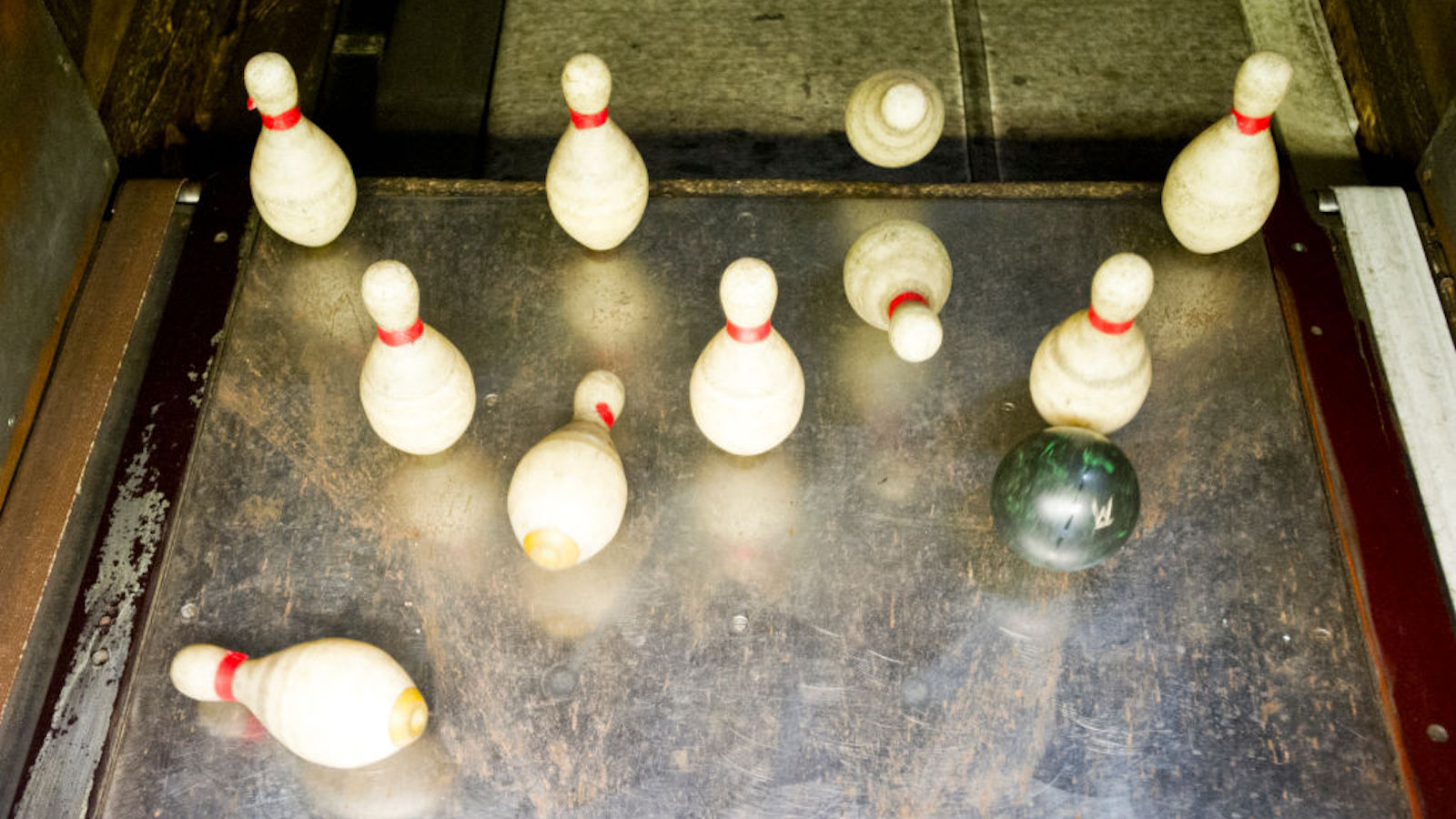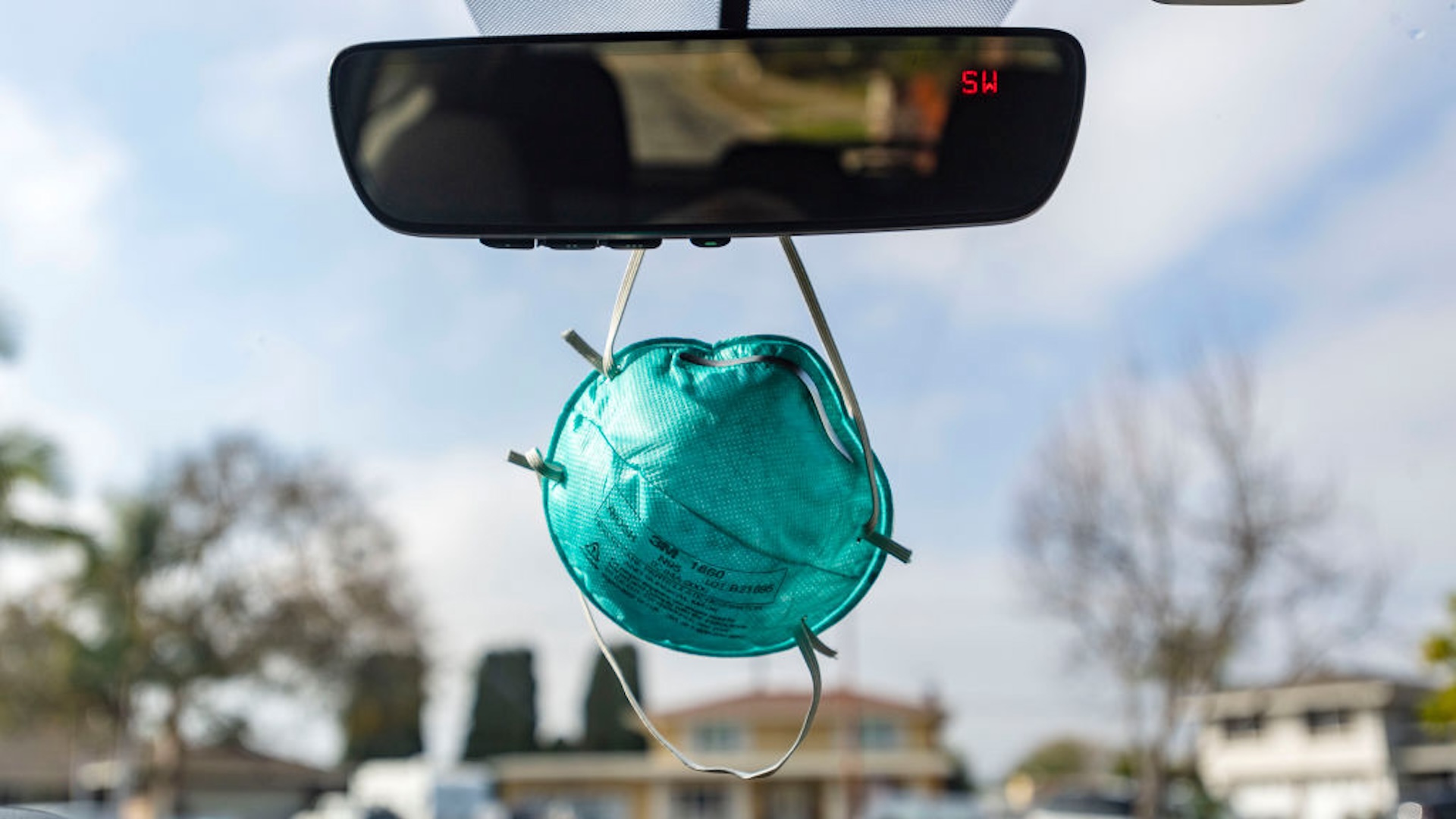Patrons who showed up at Patterson Bowling Center in Baltimore last Saturday found locked doors and signs saying the place was going out of business.
The Baltimore Sun reported that before the closing, a real estate developer had requested permits from the city to convert the two-story East Baltimore structure, which has housed the small, 10-lane Patterson Bowling Center since 1927, into an apartment building.
This wasn’t just another local business going under. Patterson Bowling Center was until now recognized as the country’s oldest continuously operating bowling alley. And, according to the National Duckpin Bowling Congress (NDBC), Patterson Bowling Center was the last duckpin-only bowling alley in downtown Baltimore, the city generally credited as the birthplace of the downsized and at one time regionally popular variety of bowling.
The sport's official history has been challenged in recent years, but for more than a century the most common and enduring narrative about duckpin's origins held that future baseball Hall of Famers John McGraw and Wilbert Robinson invented it in the late 1890s while they were with the Baltimore Orioles of the National League. The story goes that McGraw, an infielder who became the O's manager in 1899, and Robinson, the team's catcher, thought up a game at a downtown saloon they co-owned called The Diamond on Pratt Street. To keep players’ arms in shape during the offseason but put less wear and tear than 10-pin bowling would, the barkeeps commissioned a local woodworker to shave down regulation balls and pins. They didn't alter the length and width of 10-pin lanes. On a hunting trip after the game's debut, the ballplayers were said to have noticed that ducks flew off the water upon hearing a gunshot the way the shorter pins flew off the lane when struck by the smaller ball. A Baltimore newspaperman put that hunting story in print in 1899, and the offseason pastime was henceforth called duckpin. Its popularity spread across the Mid-Atlantic region from D.C. to Boston.
“Losing Patterson is a big deal,” says NDBC executive director Laura Bowden. “I hate to lose any center. But Patterson is the last vestige of duckpin in the heart of Baltimore. That’s where the huge loss is. It’s more emotional. But it’s emotional.”
(In 2005, a researcher uncovered references from the early 1890s to a game called “duckpin” bowling using smaller pins in New England newspapers, or several years before McGraw and Robinson began talking up their alleged brainchild. Though this discovery is generally accepted, duckpin is nevertheless put forth as a Baltimore export.)
And though duckpin was promoted in its infancy as being easier on the arm than 10-pin, it’s not an easier game. Bowlers with duckpin leanings will tell you how much harder their favorite sport is compared to the standard 10-pin variety. A New York Times report said that 55,266 certified “perfect” games with 300 scores were recorded during the 2013-14 season by 10-pin bowlers. Conversely: “There’s never been a perfect game in duckpin,” says Bowden.
Like, never ever. The highest recorded score in duckpin history is a 279 game bowled in 1992 by Pete Signore of New Haven, Conn.
But duckpin’s difficulty didn’t hamper its growth in the Baltimore-Washington market, which was always regarded as the sport’s hotbed.
“People don’t believe me now, but newspapers had bowling editors,” says Bowden, 75, “and the Washington Star would devote two whole pages in the sports section to nothing but duckpin at least one day a week. I have the clips!” (Bowden said she was particularly fond of the newspapering of Henry Fankhauser, a bowling editor of the Washington Daily News in the 1960s and later a bowling columnist for the Washington Star, who is in her bowling group's Hall of Fame.)
The news about Patterson Bowling Center hit me hard. I’ve spent my whole life living inside the D.C. Beltway, but I fell for what was then dubbed Charm City after college, mostly because despite being only about 40 miles from my hometown it seemed worlds away. In the 1990s, when I covered horse racing for a few years at Pimlico Race Course, all my favorite haunts were on Eastern Avenue in Southeast Baltimore. At Haussner’s, I’d eat crab cakes and strawberry pie served by waitresses pushing carts and dressed in what looked like antique nurses outfits, while surrounded by nude statues and nude paintings among hundreds of works by (among others) Homer, Whistler, and Rembrandt and an 800-pound ball of string. And Patterson Park just down the street regularly hosted amazing ethnic gatherings, my favorite being the annual and massive Polish festival where folks from so-you-think-they-can’t-dance age and fitness demographics would polka like pros around the park’s General Pulaski monument once the music started. And a few blocks west on Eastern Avenue was Patterson Bowling Center, a two-story building that from the front looked more like a hardware store than a bowling alley and from the inside was a proverbial time machine, with loud and usually non-working pinsetters, paper scoresheets, and ridiculously cheap prices for a game of bowling and food and drink. (Patterson’s proprietors also always allowed patrons to bring their own beverages, of any sort.)
And now all the places I loved most, the places that kept Baltimore weird, are gone.
Haussner’s shut down in 1999; a Sotheby’s auction of more than 100 of its art works brought in $10.1 million. Organizers of the Patterson Park Polish festival got in a fight with the city government over fees and stopped holding the event off Eastern Avenue in 2011. Now Patterson Bowling Center is about to be apartmentalized.
“It stood for everything Baltimore,” an employee of the duckpin alley told the Baltimore Sun upon its closing.
The sorry state of Patterson Bowling Center, specifically, and duckpin bowling in general are almost evergreen stories.
In 1995, for example, the Baltimore Sun wrote a feature about the disappearance of duckpin houses from neighborhoods all over the city, and built the story around the dubious future of the Patterson Bowling Center, which even all those years ago was described as “a dying relic of a bygone age.” The aforementioned New York Times report in 2016 held that there were “nearly 450” NDBC-certified alleys in the U.S. in 1963; in its report on the closure of Patterson Bowling Center, The Baltimore Sun said there are now just 75 duckpin alleys still around.
Ten-pin bowling’s poor health has been getting attention for years, too. In his bestselling non-fiction book, Bowling Alone, author Robert Putnam pinned what he said was a 40-percent reduction in bowling league participation in late-20th century America on the growing disaffection and disconnection we have with each other.
Hmmm. Anybody looking for villains in the demise specifically of duckpin need not be so introspective, however. You can find them on Wall Street. In the mid-1990s, Goldman Sachs decided there was money in bowling. The investment firm led a leveraged buyout of AMF Bowling, the world’s largest bowling corporation, for $1.37 billion in 1996, and took it public. High-profile mutual fund manager Ron Baron was among those bullish on what Goldman Sachs would do with AMF Bowling, saying after the IPO that the stock would hit $100 a share. Michael Jordan was hired to be the face of the bowling and was given his own line of signature bowling balls. AMF Bowling went on a shopping spree for bowling alleys the world over. Before it was over, AMF Bowling’s massive stable of bowling alleys also included lots of duckpin lanes in the Baltimore market.
But it turned out the world wasn’t as ready for bowling as the big money people had forecast. Revenues never met expectations and AMF Bowling stock never took off. And early into the Goldman Sachs regime, corporate leadership decided that duckpin bowling was among the things mucking up the chance that investors would ever cash in on a bowling boom. And they began shuttering the duckpin outposts in and around Baltimore. In one particularly bleak day in March 1998, AMF Bowling announced it was simultaneously shuttering three area duckpin houses.
At the same time, AMF was converting dual-format alleys that offered both 10-pin and duckpin into 10-pin only businesses. None of AMF’s 10-pin alleys in the market were closed at the time.
Duckpin’s survival as a sport was further put into peril when AMF refused to sell the mechanical pinsetters and other duckpin equipment from the shuttered or reformatted businesses to owners of independent duckpin alleys in Baltimore or folks who wanted to open new duckpin houses. Charles Mackall, then the owner of Patterson Bowling Center, told me at that time that he was among those AMF wouldn’t do business with. It was obvious to Mackall that the corporation would rather destroy the equipment than let him or anybody that cared about keeping duckpin bowling alive put it to use. Mackall knew that the growth of duckpin was impossible, and survival of the game unlikely, if no new blood was allowed in.
“What we’re seeing is a 10-pin company trying to do away with ducks,” Mackall said. “They want to see us all die and go away.”
A week after AMF Bowling announced this 1998 massacre of Baltimore duckpin houses, I interviewed Merrell Wreden, vice president of marketing for the corporation. Wreden told me the moves weren’t part of a plan to exterminate duckpin bowling. But he admitted AMF’s mission was to make money for investors, not to sustain a regional pastime.
“This is strictly business,” Wreden said.
The shortage of duckpin equipment that AMF Bowling’s tactics exposed and exacerbated has never abated, Bowden told me, as her organization’s attempts to get manufacturers to produce duckpin bowling implements have failed.
“The damage AMF did was huge,” says Bowden. “I swear to god, if I could just find somebody to manufacture a free-fall pinsetter … There hasn’t been anyone interested enough in duckpin with any money to manufacture."
It won’t heal the hurt caused by the loss of Patterson Bowling Center, but duckpin devotees might get some pleasure in remembering what an utter failure the billionaire boys club’s safari into bowling really was. About two years after the Goldman Sachs crew took the corporation public, AMF Bowling stock was selling for just five cents a share and it was delisted from the New York Stock Exchange. The corporation filed for Chapter 11 bankruptcy in 2001.
Baron, however, the guy who told investors that AMF Bowling would soon be trading at $100, is still at it. Last month, he told investors to go heavy on Tesla stock.






